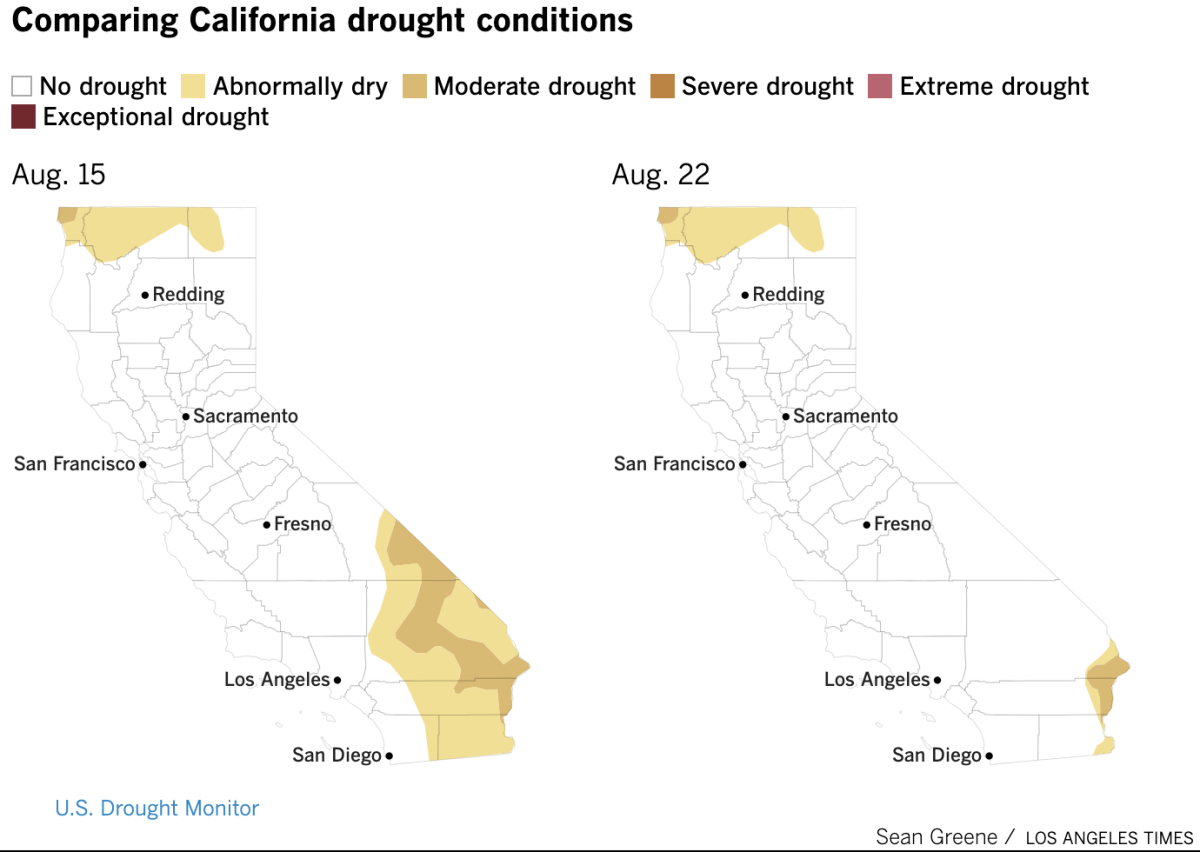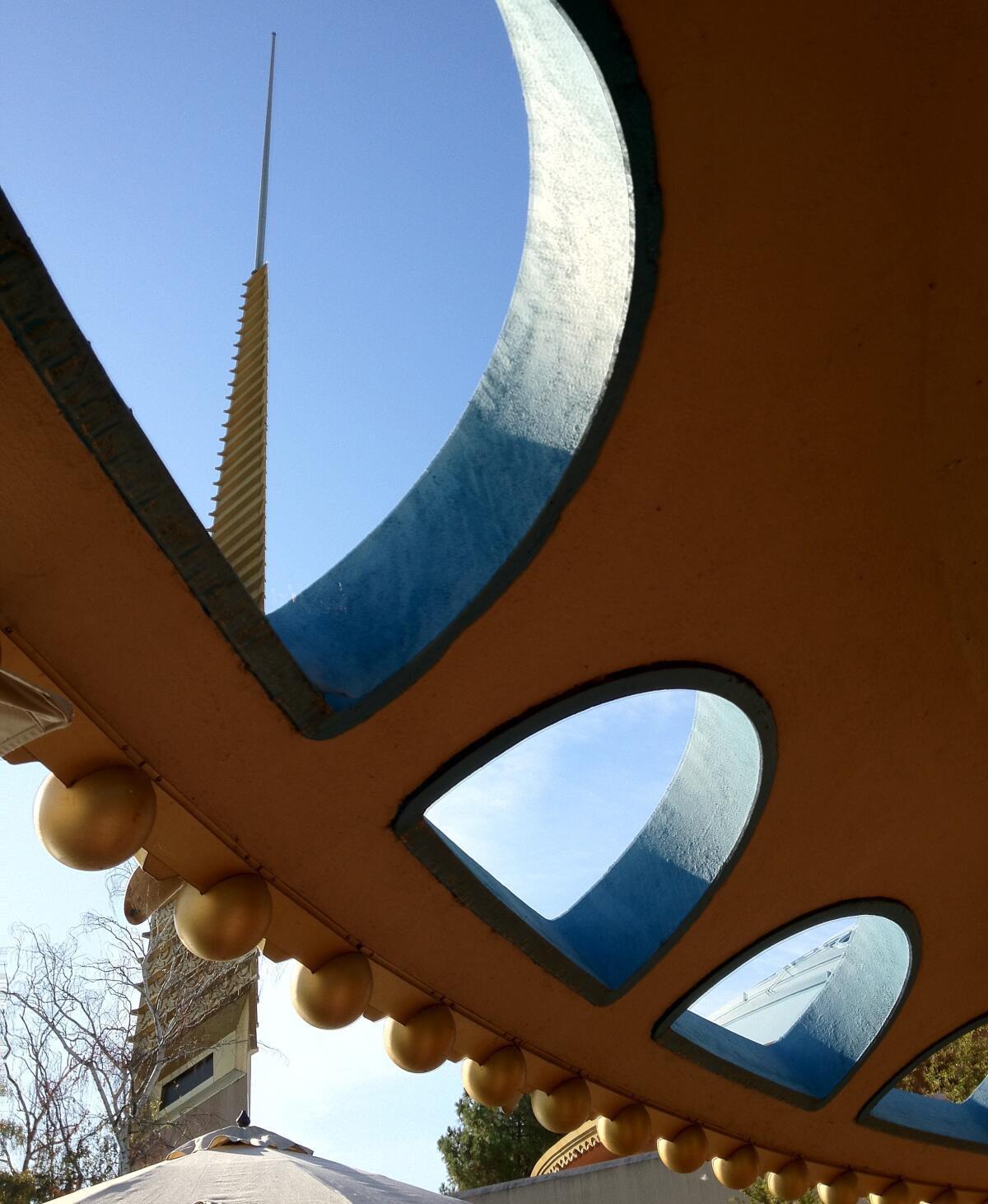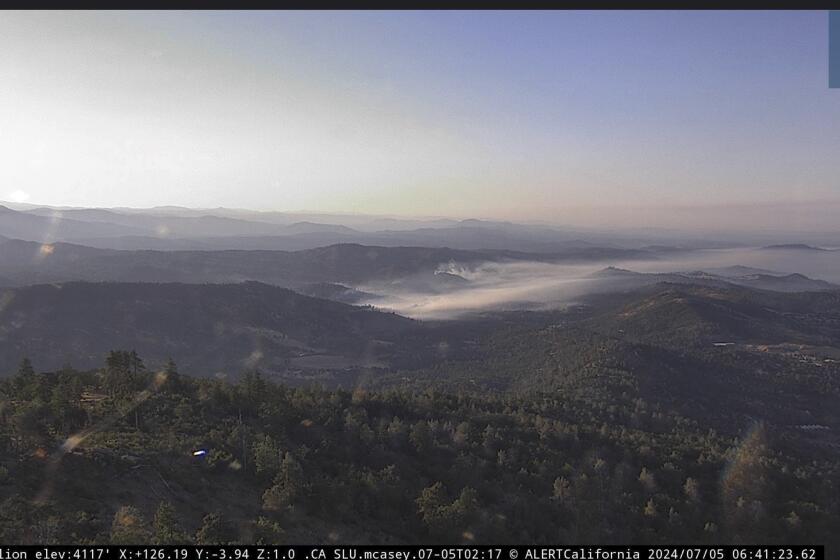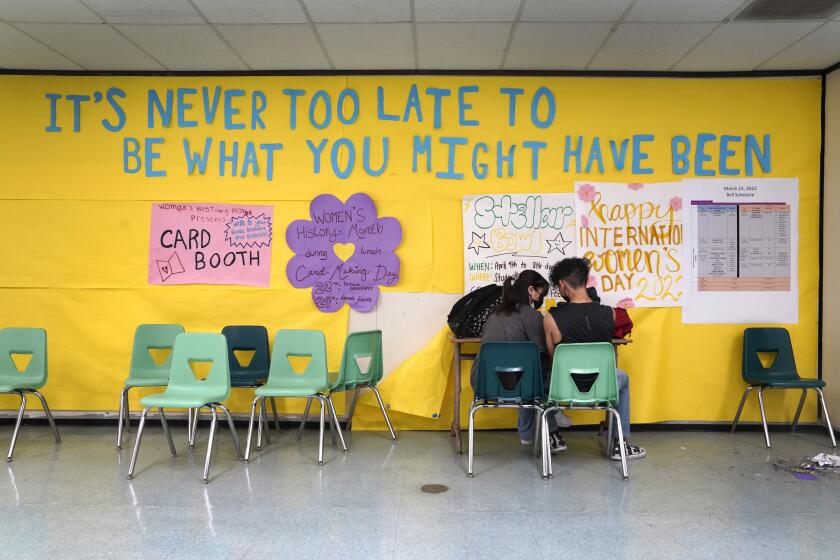Hilary highlights California’s missed opportunities for rainwater capture

Good morning, and welcome to the Essential California newsletter. It’s Wednesday, Aug. 30.
The epic summer rainfall that Hurricane-turned-Tropical-Storm Hilary dumped on California as it spun across the state last week further reduced drought conditions in regions long dried out.
Nearly all of California’s Mojave Desert has been deemed drought-free after receiving 2 to 6 inches of rain region-wide.
But just as we saw with the parade of atmospheric rivers last winter, our systems were mostly unprepared to hold on to much of that water. That remains an “urgent challenge” to the state as it works to capture more rainwater to replenish depleted groundwater sources, my colleague Grace Toohey reported.
“State and local officials have been actively working to improve methods to capture stormwater, but it’s simply not been fast enough to keep up with growing water demands in a more extreme climate — while balancing flood control,” she wrote this week.

Art Castro, a watershed manager for L.A.’s Department of Water and Power, told Grace they captured roughly 3.2 billion gallons from Hilary’s downpour, about a year’s worth of water for 40,000 households.
But that accounts for only about 7% of the water the city has captured since October, he said, citing “limitations of our infrastructure.”
According to the Pacific Institute, California’s urban areas let between 770,000 and 3.9 million acre-feet of water spill away annually (depending on how dry or wet the year is).
“We’re not even coming close to capturing all the runoff,” Mark Gold, the director of water scarcity solutions for the Natural Resources Defense Council, told Grace. “We can definitely do a lot more than what we’re doing.”
Although the vast majority of the state is now out of drought conditions, I’m reminded of a conversation I had with hydroclimatologist Peter Gleick back in April when I was trying to understand the impact our major rainstorms had on the state’s historic drought.
Gleick, co-founder and senior fellow of the Pacific Institute, told me even though the U.S. Drought Monitor map showed fewer concerning colors in California, the next drought is a matter of when, not if. He hoped the state’s decision-makers would take advantage of a wetter year “to fix other parts of our water system” rather than “forget that we have a water problem because we had a good year.”
“It’s precisely in the wet years, when we have a little breathing room, that we ought to be doing more to prepare for the dry years that we know are increasingly frequent,” he said.
And now, here’s what’s happening across California from Helen Li and Laura Blasey:
Note: Some of the sites we link to may limit the number of stories you can access without subscribing.
L.A. STORIES
After migrating from Tijuana and seeking asylum in the U.S. when he was 13, Cain Carias learned the art of puppetry from Bob Baker. He has now performed at community centers, parks, concerts, schools, quinceańeras and events throughout Los Angeles for 20 years with his puppets El Triste and La Smiley. Read about the lessons that he learned along the way from De Los at the Los Angeles Times.
The co-owner of a Hollywood costume firm filed a lawsuit Tuesday against reality TV star Erika Girardi, two of her staff members, current and former U.S. Secret Service agents and American Express, alleging corruption among federal law enforcement to benefit Girardi and her once-influential husband, former Los Angeles attorney Tom Girardi. In the 70-page suit, Christopher Psaila accuses the couple of having “weaponized the Secret Service to maliciously prosecute” him to secure a $787,000 refund. Los Angeles Times
HOUSING AND HOMELESSNESS
In the Mission District in San Francisco, a 36-bed transitional housing center opened in January. The program has now attracted the attention of a Salesforce tech billionaire, who donated $ 1 million to help fund it. The Way Out aims to transition residents who were formerly in the Salvation Army’s Harbor Light substance-use rehabilitation centers to fully independent living within two to three years. San Francisco Chronicle
The first CARE (Community Assistance, Recovery, and Empowerment) Courts will soon open across the state in seven counties and state lawmakers hope they will be the answer to California’s dual, overlapping homelessness and mental health crises. The program walks the line between voluntary and forced mental health treatments for those with the gravest needs. Here’s what you need to know. CalMatters
GOVERNMENT AND POLITICS
Documents show California is referring U.S. citizens for deportation and denying them rehabilitation opportunities. The American Civil Liberties Union of Northern California says California Department of Corrections and Rehabilitation staff routinely assume people in their custody are deportable immigrants and refer them to Immigration and Customs Enforcement. This happens even when CDCR’s own records indicate those detained are U.S. citizens or immigrants who should not be deported. Los Angeles Times
An Anti-Caste Discrimination Bill has passed 55-3 in the California Assembly after months of campaigning by critics. It will now head back to the Senate and then to Gov. Gavin Newsom’s desk for a signature. Sacramento Bee
Though California passed a digital privacy law in 2018 that gives residents the right to ask businesses to delete their personal information, it is not an easy endeavor. A person has to make the request one at a time to potentially hundreds of companies. A bill known as the Delete Act aims to make it easier by allowing consumers to make just one request to every data broker to delete their personal information. Lawmakers are set to vote Friday as tech companies, advertisers, political consultants and credit unions are working to kill it. Los Angeles Times
Support our journalism
HEALTH AND THE ENVIRONMENT
Members of a Central California condor flock who have been taking some summer road trips (air trips, I guess), were spotted scoping out new territory as far north as Mt. Hamilton near San José. Their widening range represents good news for the resurgent population, which has grown from 20 in 2002 to 93 today. But the souring scavengers still face hazards, namely through poisoning by eating animals killed by humans using lead bullets. Mercury News
After the Lahaina wildfires, some Maui residents are concerned about the lack of tourism and job prospects for their families and the environmental dangers. With redevelopment also potentially increasing gentrification, many of the state’s poorest are considering a move to Las Vegas, the “ninth island.” Los Angeles Times
What’s rarer than a blue moon? A super blue moon! The astronomical phenomenon, in which the second full moon of the calendar month reaches its full moon phase at its closest point to Earth, is set to arrive Wednesday night. Here’s how to see it yourself. Los Angeles Times
CALIFORNIA CULTURE
A passionate cohort of dancers in Los Angeles have adopted the shuffle and repackaged the footwork for a new generation, flocking to well-known places like the Sepulveda Dam, Grand Park, Rodeo Drive, Hollywood and Highland, Venice Beach and the Santa Monica Pier to film videos. MC Hammer’s running man and underground raves in the ’80s popularized the moves, and now it’s in the zeitgeist once more, courtesy of viral TikTok and Instagram videos. Los Angeles Times
Free online games
Get our free daily crossword puzzle, sudoku, word search and arcade games in our new game center at latimes.com/games.
AND FINALLY
Today’s California landmark is from Sue Lewis of San Rafael: the futuristic Marin County Civic Center in her hometown.

Sue writes:
[It] was designed by Frank Lloyd Wright. Construction was completed in 1962 by Wright’s protégé, Aaron Green... set among the hills of Marin. Inside and out, its cut-outs, curves and spire are truly distinctive.
What are California’s essential landmarks? Fill out this form to send us your photos of a special spot in California — natural or human-made. Tell us why it’s interesting and what makes it a symbol of life in the Golden State. Please be sure to include only photos taken directly by you. Your submission could be featured in a future edition of the newsletter.
Please let us know what we can do to make this newsletter more useful to you. Send comments to essentialcalifornia@latimes.com.
Start your day right
Sign up for Essential California for news, features and recommendations from the L.A. Times and beyond in your inbox six days a week.
You may occasionally receive promotional content from the Los Angeles Times.




